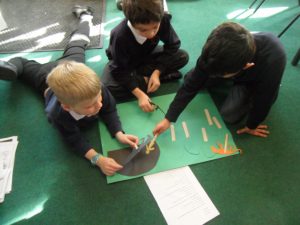Children from disadvantaged backgrounds do less well at school in Brighton and Hove than on average across the country, according to a new report.
And the coronavirus lockdowns and other restrictions didn’t help as they were less likely to have somewhere suitable to study during virtual lessons and less likely to have computers and internet access.
The report said that children did less well in Whitehawk, Coldean and Moulsecoomb North, the North Laine and The Lanes, Hangleton South (the Knoll Estate) and Mile Oak.
Disadvantaged secondary school pupils in these areas performed less well than disadvantaged pupils elsewhere.
The findings were contained in a paper headed “Education Disadvantaged Strategy” which is due to go before Brighton and Hove City Council’s Children, Young People and Skills Committee next week.
The strategy has been drawn up by the Brighton and Hove Education Partnership and head teachers and is intended to help all pupils achieve their full potential.
It said that there were almost 32,000 pupils in state-funded schools in the city. Of these, 6,434 were disadvantaged because they were registered for free school meals.
Other disadvantaged pupils included those who had been looked after by the state in the past six years, had been in care and were now adopted or subject to special guardianship. The category also included children with parents in the armed forces.
The report to councillors said: “Research tells us that disadvantaged pupils are less likely to do as well at school … for a range of complex reasons.
“Significant work is needed at school but also across all services if these barriers are to be overcome.”
The report said that covid-19 measures had had a more significant effect on disadvantaged pupils although progress on closing the disadvantaged “gap” had stalled before the pandemic.
To tackle the challenges, 6,566 laptops were delivered to disadvantaged young people in Brighton and Hove to help them with their studies.
Before the pandemic, the link between being absent from school and exam results and qualifications was worse for disadvantaged pupils than for the more affluent.
And since the start of the pandemic, attainment had been adversely affected by school closures, burst “bubbles”, shielding and isolation, the report said.
The council expects to spend £25,000 to develop the strategy before a full consultation in the spring.
The report said: “It recognises that significant work continues through schemes like every child a reader, primary maths support, a focus on attendance for disadvantaged (and) support for online learning.”
Councillors are being asked to give their views about the final draft of the strategy and to endorse it before the full consultation.
The Children, Young People and Skills Committee is due to meet at Hove Town Hall from 4pm next Monday (10 January). The meeting is scheduled to be webcast on the council’s website.










Failing these pupils now can affect the rest of their lives – the local authority and administration should be hetting this right, it simply is unacceptable.
The kids just need a dose of Cllr Clare’s CRT. That’ll sort it!
The authority need to get this right, and get it right now. Current proposals to reduce pupil intake in the most deprived areas of the city only serve to further disadvantage kids in these schools. Their present proposals – depriving our schools and areas of funding and resources, and the ability to get funding and resources will make things worse and not better. The present proposals go against their own stated aims and objectives including – ending the attainment gap for disadvantaged children. By admission, those who drew up the proposals freely admit it is flawed and are not proposals designed to drive improvement or close the attainment gap. The Council need to re evaluate NOW.